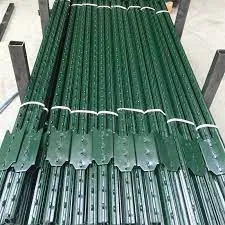Connecting Brick Structures to Concrete Walls for Enhanced Stability and Aesthetics
Understanding Brick Ties and Their Importance in Concrete Walls
When it comes to constructing durable and efficient buildings, understanding the relationship between brick and concrete is crucial. Brick ties play a significant role in ensuring the stability and longevity of structures that combine these two materials. In this article, we’ll explore the function of brick ties, their types, installation methods, and their importance in concrete wall construction.
What are Brick Ties?
Brick ties, also known as brick lap ties or masonry ties, are thin, flat pieces of metal used to secure brick masonry to other building materials, typically concrete walls. Their primary purpose is to stabilize the brick veneer, creating a safe and reliable connection between the brick and the concrete structure, reducing the risk of structural failure.
The Function of Brick Ties
The main functions of brick ties in concrete wall construction include
1. Load Distribution Brick ties help to distribute loads and stresses evenly across the structure by anchoring the brick veneer to the concrete. This distribution is crucial, especially in structures exposed to dynamic forces like wind or seismic activity.
2. Movement Accommodation A building will experience some degree of movement due to thermal expansion and contraction, settling, or shifting loads. Brick ties allow for some flexibility, accommodating minor movements without causing damage to the brick veneer.
3. Moisture Management Proper installation of brick ties helps in managing moisture that may penetrate the brick through cracks or porous sections. They create air spaces that can facilitate drainage and reduce the risk of moisture-related issues in the wall system.
4. Structural Integrity By securing the brick to the concrete wall, brick ties enhance the overall structural integrity of the building, preventing the veneer from becoming dislodged or damaged.
Types of Brick Ties
brick ties to concrete walls

There are several types of brick ties available, with the most common being
1. Metal Ties These are usually made of galvanized steel to prevent rusting. They come in various shapes, including ladder and wire ties, and are the most commonly used for modern applications.
2. Plastic Ties Lightweight and resistant to corrosion, plastic ties provide a cost-effective solution for connecting brick veneer to concrete. However, they may not be as robust as their metal counterparts in dealing with extreme conditions.
3. Composite Ties Some newer materials combine the benefits of plastic and metal ties, offering durability, reduced thermal bridging, and enhanced resistance to moisture.
Installation of Brick Ties
Correct installation of brick ties is critical to achieving their intended functions. Generally, brick ties should be placed
- At Regular Intervals The spacing of brick ties should adhere to local building codes and structural requirements, with ties typically installed every 16 to 24 inches vertically and every 24 to 36 inches horizontally.
- Embedded in Mortar Joints It is essential to set the ties within mortar joints for better adhesion and support. This method helps ensure a secure bond between the brick and the concrete wall.
- Maintaining Alignment The ties must be aligned correctly to avoid introducing additional stresses to the wall, which could compromise stability.
Conclusion
Brick ties are a fundamental component in the construction of buildings that utilize both brick and concrete. Their role in load distribution, accommodation of movement, moisture management, and overall structural integrity cannot be overstated. As construction technologies continue to evolve, so too will the materials and methods related to brick ties, but their importance in enabling durable, lasting architecture will remain a constant in the field. Builders and architects must prioritize proper installation and adherence to local building codes to ensure that their structures are safe, efficient, and sustainable for generations to come.
-
The Durability and Versatility of Steel Wire
NewsJun.26,2025
-
The Best Iron Nails for Your Construction Projects
NewsJun.26,2025
-
Strengthen Your Projects with Durable Metal Stakes
NewsJun.26,2025
-
Get the Job Done Right with Duplex Nails
NewsJun.26,2025
-
Explore the Versatility and Strength of Metal Mesh
NewsJun.26,2025
-
Enhance Your Security with Razor Wire
NewsJun.26,2025














